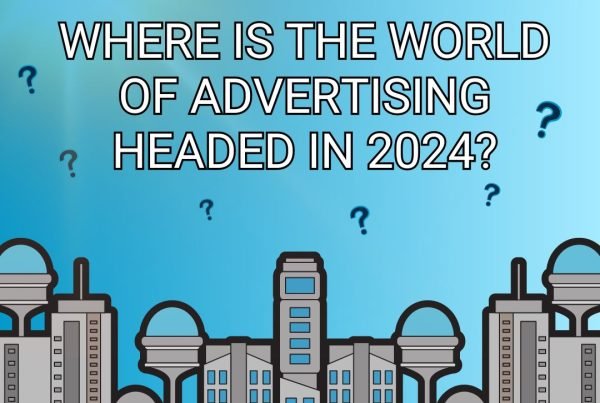Advertising Week is a week-long event that takes place in multiple locations all over the world, and New York City is one of them. The event gathers the geniuses and experts of the advertising industry and presents different panels on the most crucial topics in media. The featured speakers included: Katie Couric, Tabitha Broan, Tamron Hall, Al Roker, Bethenny Frankel, Sherri Shepherd, Emily Ratajkowski, and many more. In addition, CEOs and Head of Marketing and Business decisions of major companies spoke including representatives from: Google, Spotify, Lyft, New York Times Games, NBC, and etc.
A few ESM’s team members took a quick trip from the Hoboken office to the Market Line in NYC, to gain the incredible experience of Advertising Week. Each seminar averaged about 30 minutes and offered insightful and inspiring information on how: brands must stand out during the political season, to blend the digital and real world, advertise to the right consumers, and make a strong impact through a company. The first panel jumped into ways to maneuver through the most hectic season of the year.
During Q4, companies, brands, and agencies struggle to break through the loud political noise. Especially since users tend to purchase from companies and brands that stand for their social issues. As a result, many brands carry the pressure to be cautious of social issues during the season.
In the panel, “Talk Politics to Me – Why Every Brand Today Needs a Dose of Political Know-How,” Panelists: Valerie Davis – President of Assembly, Heather Foster – Head of National Policy of Lyft, Ashwin Navin – CEO Cofounder of Samba TV, and Tyler Goldberberg – Political Strategist of Assembly guided the audience on how to stick out during the season.
Heather Foster emphasized that at Lyft, a way they keep their customers engaged during political season is by giving the community the spotlight. The company listens and responds to issues that connect with their customers and drivers. Valier Davis asked: how do we share or tell a brand to emphasize social issues? Heather Foster swiftly gave the example of Lyft’s Voter Access Program that involves a discount code for rides activated on voting day encouraging riders to vote.
The panel continued by discussing how companies put a third of their budget towards political, social issues, or activism focused campaigns. A brand aligning with current news is crucial as it offers the opportunity for a company to show what they stand for.
The key takeaways of the panel were: companies can’t ignore what’s happening with social advocacy and instead they need to lean into, break through the noise, and look at the data. Ashwin Navin ended the conversation by emphasizing to view and integrate television and streaming together, rather than looking at the two as completely separate products.
The concept of integrating two products together also came up in the next seminar – “How Digital and Social are Reimagining The Future.” The panelists discussed strategies and examples when Out-of-Home ads not only attracted individuals physically, but brought them to a digital space. The concept of blurring the lines and incorporating digital and billboard together advances customers’ experiences with advertising.
Chandra Cooks – Managing Director of New York Times Games, began the panel on a brand awareness campaign for the Spelling Bee campaign placed on the subway to target back to school parents. The ad offered the experience to play the Spelling Bee game in multiple environments outside of home.
The discussion of offering a digital experience through subway billboards continued when Andy Goldberg – Chief Marketing Officer of New York Mets gave an example of an ad that showed what it’s like to have a NYC experience as a true New Yorker. The ad brought out the Met culture outside of the arena by displaying a QR ad on the subway, which brought users ways to buy tickets, give opinions, engage with the community, etc.
The conference then gave a twist in conversation when Matthieu Lorraine – Global Head of Creative at Google took the audience to the future by modeling AR projects Google is working on. He showed Google’s intention to “turn the world into a playground” and ways users could time travel. With AR experiences, users could take pictures of a historic block and the information will appear on the device screen. In addition to creative visuals with the “Magic Sky” feature that gives a way to edit the sky through AR.
The panel proved that blending the real world and the digital is the future of attracting modern users, which tied into the next seminar.
The third panel, “What Modern Consumers Want From the Media Experience,” went over how to make sure the right consumers are getting the right ad.
Dan Walsh – Global Head of Business Strategy & Operations of Spotify, elaborated how Spotify uses personalization with their users. By offering the “daily mix” playlists, top played countdowns at the end of the year, and customized genre playlist, the app proves that it caters to what their users want. Dan Walsh proceeded the conversation by stating that after the company used personalization with music, they did it with podcasts by suggesting podcasts to users based on their behavior through the app. He said especially mental health podcasts for generation z users. Now, the company will do the same method for audio books. Investing in automation for convenience and efficiency is the main goal for Spotify as a company.
The main tips that were taken away from the panel was: creating interactive ads for user engagement, reward the customers and customize the advertisement based on the environment.
Lastly, the last panel not only informed the audience, but inspired them through strong company storytelling. “The Shift from Image to Impact: How Brands are Creating an Antidote to Apathy” highlighted how to avoid being ignored as a brand. How people look at a brand is important and there are strong creative ways for a brand to make a strong impact though image. A brand’s goal shouldn’t just be to attract customers, but to move humanity forward. At the end of the day, consumers don’t just want to buy a product, they want to financially and emotionally invest in the brand.
Ann Mukherjee – Chairman & CEO of Pernod Ricard North America introduced the panel by using the alcohol industry as an example. There is still a slight anti-acceptance of alcohol in general, because it’s connected with partying, losing up, inappropriate actions, etc. Especially for women, as alcohol is male-dominated industry.
Ann Mukherjee continued the discussion by emphasizing that companies need to be bold and push forward with ideas. She then used Absolute Vodka as an example for their “Sexual Consent” campaign. The brand took a risk and pushed experiences to customers to make a social change.
Advertising Week unites the advertising community and informs fellow members on the most creative, trendy, and effective ways to speak to users and customers. At ESM, it’s important to us to give the team opportunities to learn about the media outside of the office. In addition, as a company we try to stay up to date with the latest trends and issues to grasp and give the most accurate information to our accounts.
The team gained insight, inspiration, and imagination from the entire experience and is already eager to go next year!



